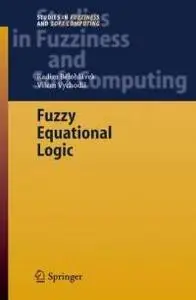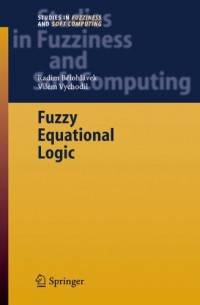Fuzzy Equational Logic (Studies in Fuzziness and Soft Computing)
9783540262541 | (3540262547) | Springer | 2005 | 3MB | RS | FF
The present book deals with algebras, congruences, morphisms, reasoning about identities, classes of algebras and their axiomatizability, etc., from the point of view of fuzzy logic. We therefore deal with topics traditionally studied in universal algebra. Our approach is the following. In classical universal algebra, one works in bivalent setting. That is, one works with a two-element Boolean algebra 2 as the underlying structure of truth degrees. As an example, any two elements of an algebra either are congruent or not with respect to a given congruence relation. In our approach, we allow for more general structures of truth degrees than 2. We consider a structure of truth degrees as a parameter for which we can take any suitable structure L of truth degrees. For us, being suitable means that L is a complete residuated lattice. That is, L consists of a set L of truth degrees equipped with (suitable truth functions of) logical connectives. In this sense, we parameterize concepts and results known from classical universal algebra. If we put L = 2, we get just the concepts and results of classical universal algebra in which case the set L of truth degrees contains just two elements, namely L = {0, 1}. This is a boundary choice and we have other possibilities, e.g. L = [0, 1] (real unit interval). Returning to our example, a practical consequence is that, in general, congruence is a fuzzy relation. Two elements of an algebra may thus be congruent in degree, say, 0.8. This seems to be natural. Namely, the idea of congruence is to group together elements which are similar from a certain point of view (example from crisp setting: congruent numbers in the sense of having the same remainder when dividing by 3). Congruence in degrees thus corresponds to the fact that we may consider elements similar to degrees not necessarily equal to 0 or 1 (example: two sets might be similar in degree proportional to the extent of their overlap). Thus, allowing more general structures than the two-element Boolean algebra is not just a mathematical exercise.



